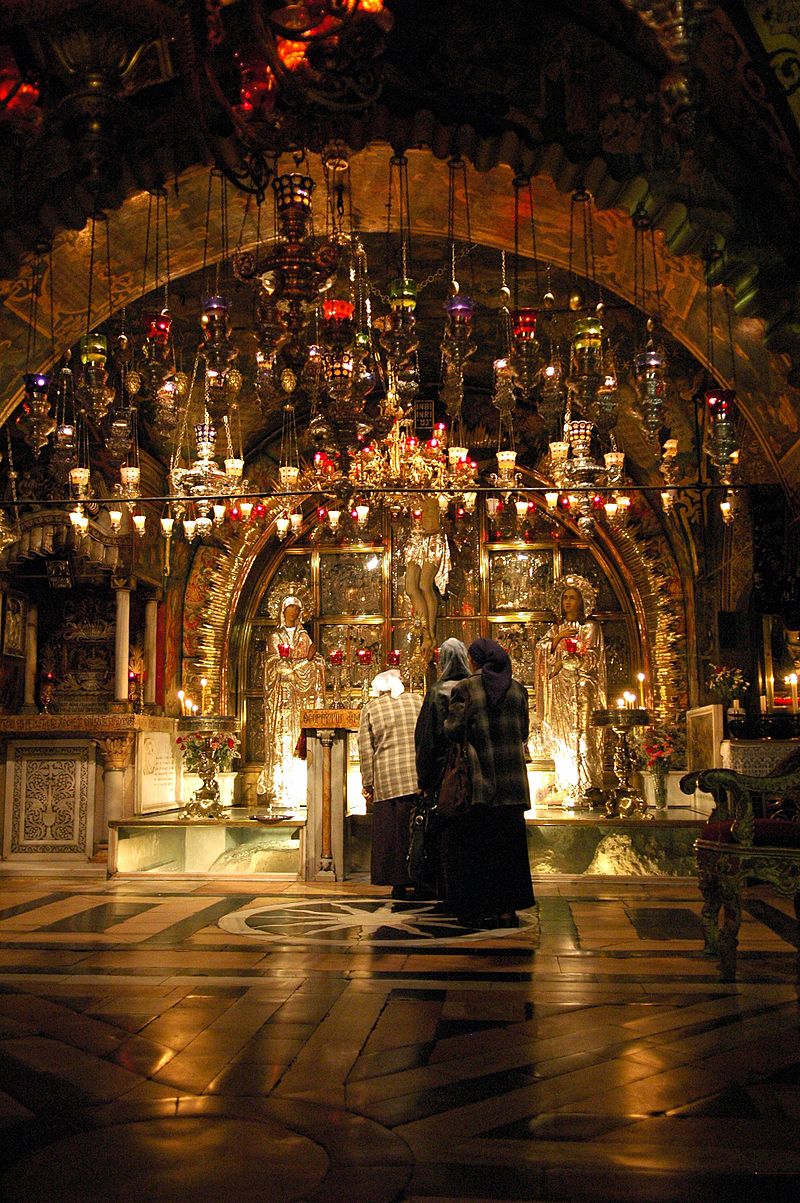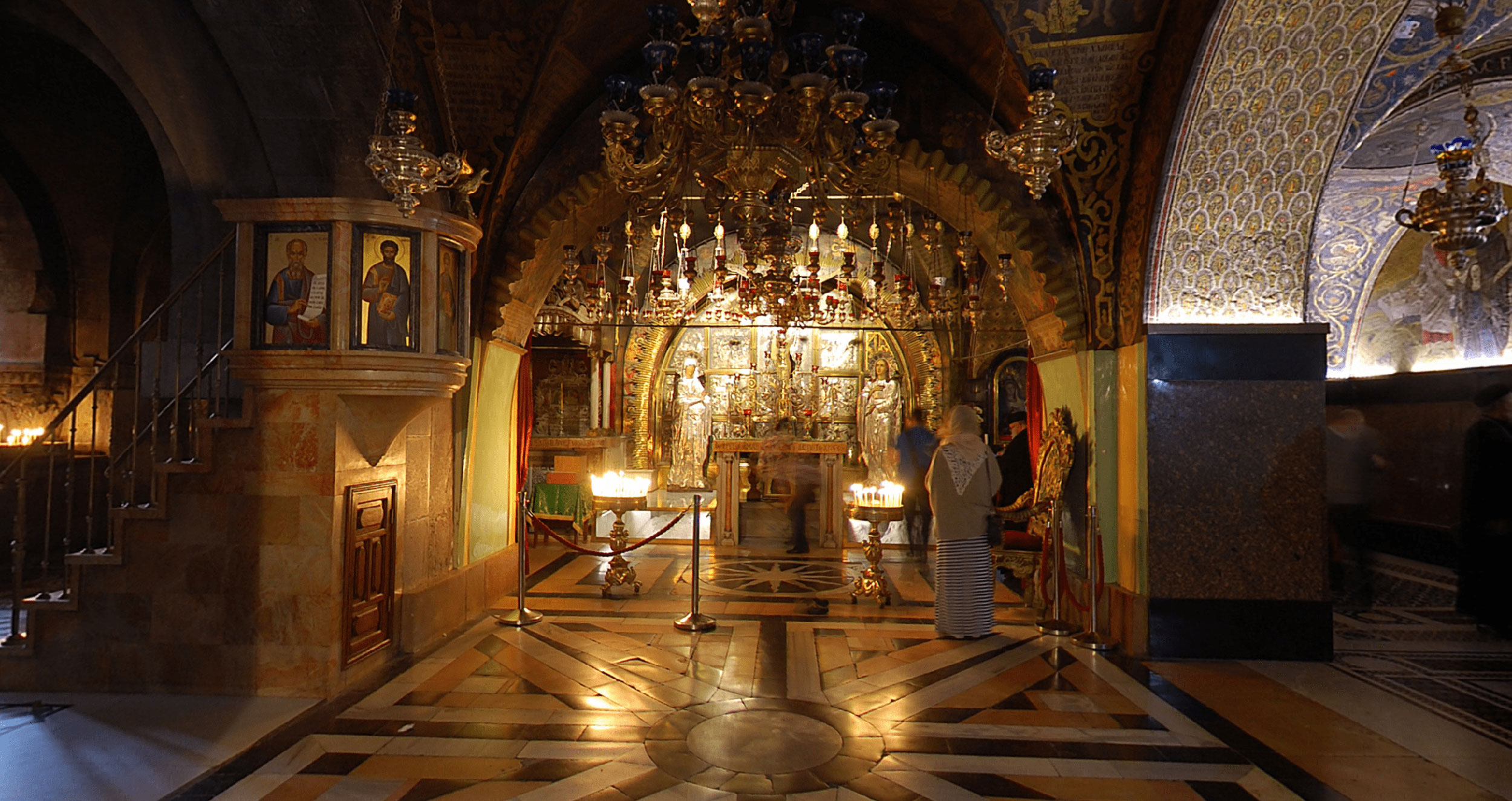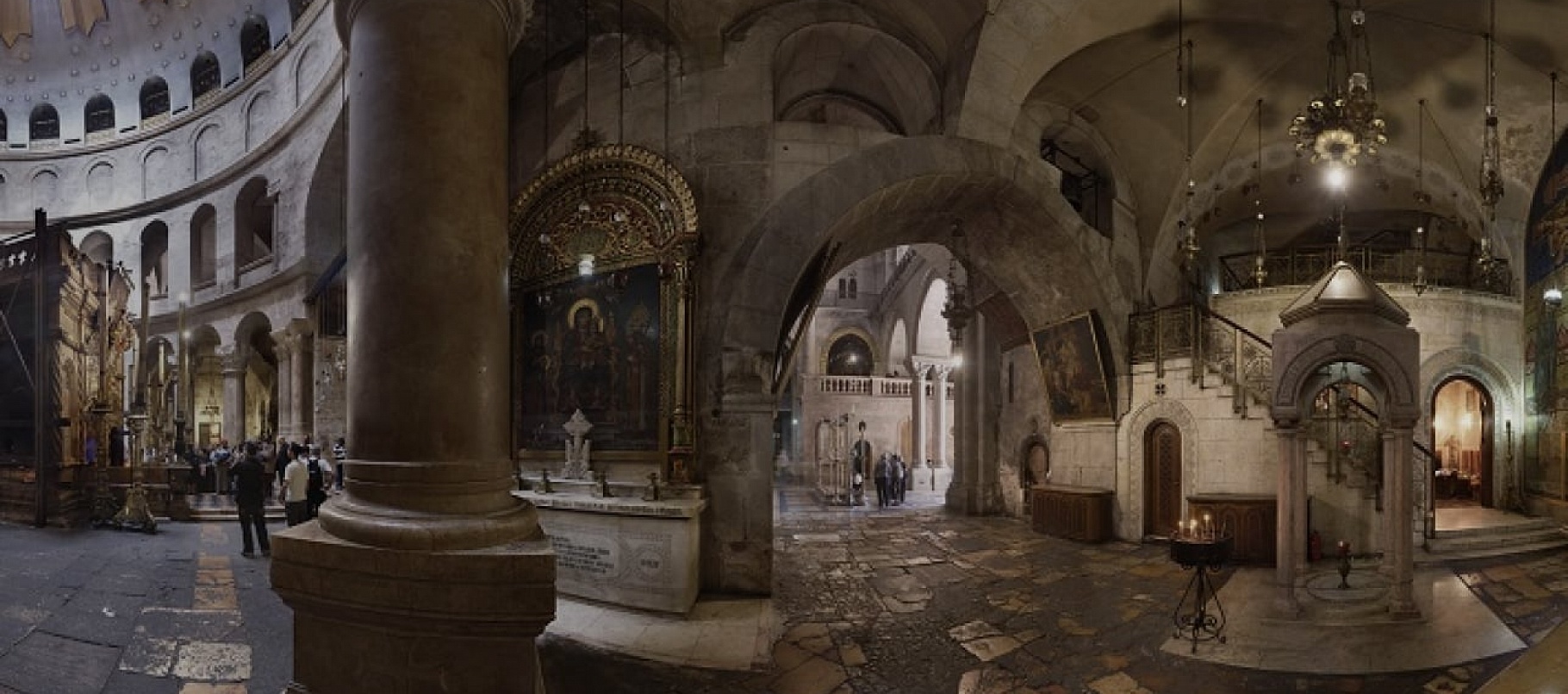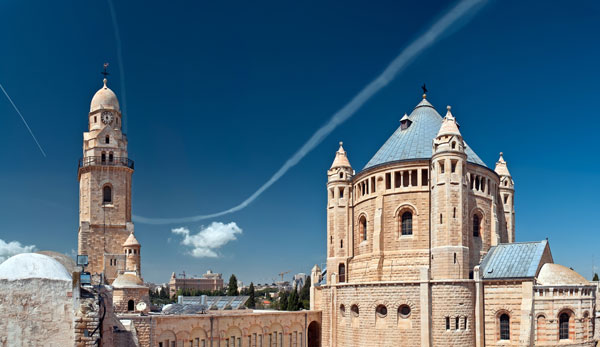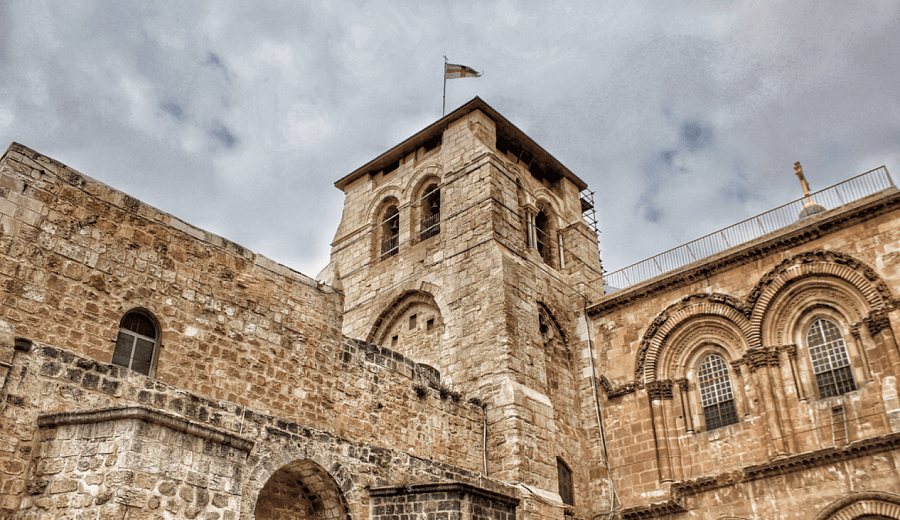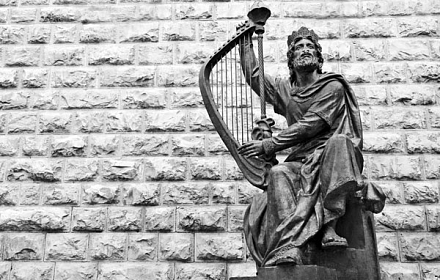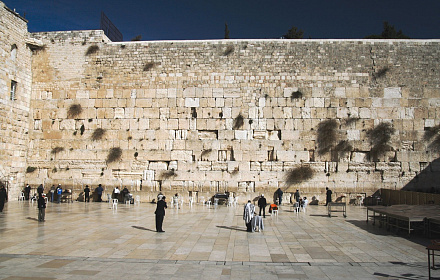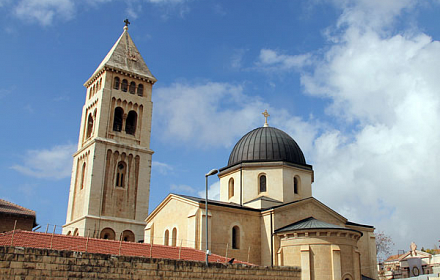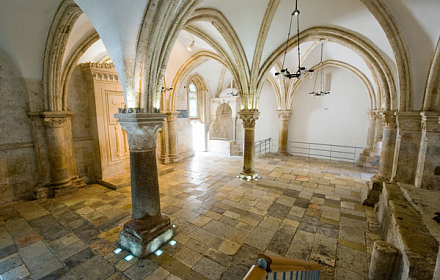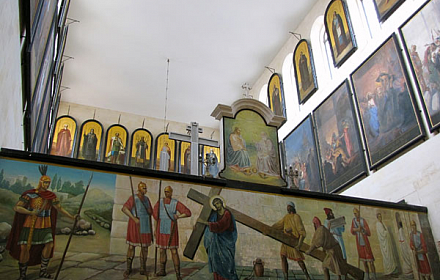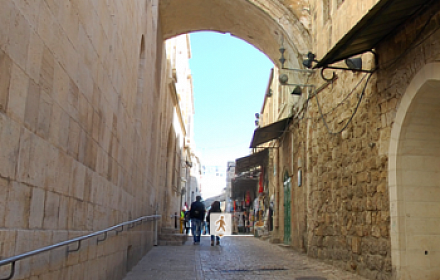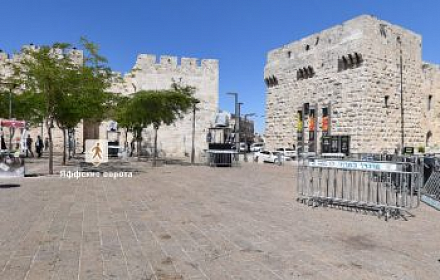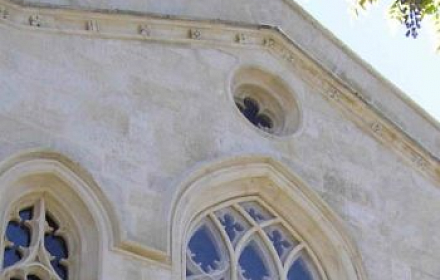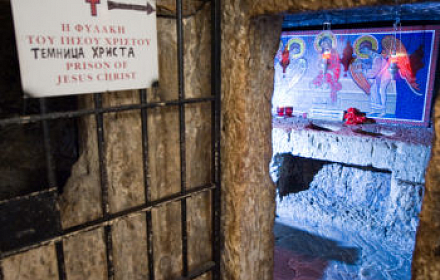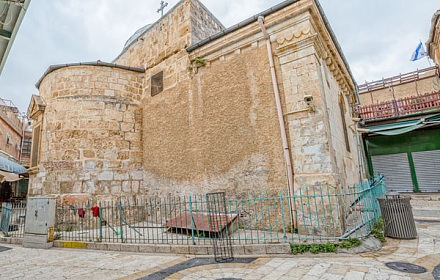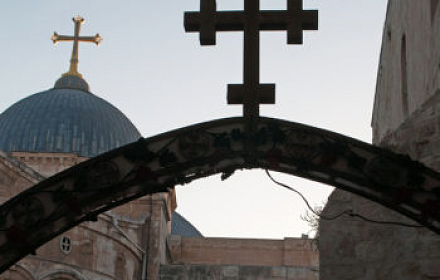Calvary in the Church of the Holy Sepulcher (Jerusalem, Israel)
Country
Israel
Address
East Jerusalem, Ha-Nozrim (between Suq Khan e-Zeit and Christian Quarter Rd)
Contacts
Неизвестно
0
25994
About object
Calvary is a small rock or hill where, according to the New Testament, Jesus Christ was crucified. Now located in Israel. Along with the Holy Sepulcher, it is one of the two main shrines of Christianity.
It is believed that Golgotha owes its name to the skulls that were formed at the place of execution of criminals in ancient Jerusalem. There is also a legend that Adam was buried on the site of Golgotha.
The architectural history of the temple was manifoldly reflected in the fate of Calvary. The mountain, on which, according to legend, the Savior was crucified, builders and restorers of different eras changed in various ways. Golgotha acquired its modern look as a single architectural object as a result of the general renovation of the church after the fire in 1808. In addition to the outer staircase from the street, which is practically not used, two shoots (stairs) lead upstairs - the right one, immediately from the door of the church, 'Latin' leads to the Catholic side-altar), left, from the side of the Catholicon, 'Greek' (since it leads to the main, Orthodox side-altar).
The height of the platform into which Golgotha was turned is 4.5 m, the area is 11.5 × 9.25 m. This whole area forms a kind of single temple, divided by two massive columns into two naves. The left one belongs to the Orthodox, the right one belongs to the Catholics. In the Orthodox nave, the throne is made of pink marble, 1 m high, decorated in front with decorative Corinthian columns. Under the throne is a hole lined with a silver circle, into which the Cross of the Lord was erected. The entire surface of the rock is covered with a marble floor, only to the right and left of the throne, in the glazed openings, one can see the gray stone of the “living” Calvary and the crack that passed through the entire rock as a result of the earthquake at the time of the Savior’s death: “And so, the curtain in the temple was torn in two , from top to bottom; and the earth shook; and the stones were set apart ”(Matthew 27, 51).
In the Catholic nave there is a silver altar made by the master Dominique Portigiani (from the Convent of San Marco in Florence) and donated to the temple in 1588 by Ferdinando Medici, Grand Duke of Tuscany. It was originally intended for the Anointing Stone, which explains its elongated, elongated shape. But due to friction between denominations, the Franciscans were forced to put it in the right side chapel of Calvary belonging to them. To the left of the altar of Nailing to the Cross, under the arch separating the Catholic part of Calvary from the Orthodox, there is a small altar of the Virgin of the Sorrowful, also belonging to the Franciscans.
Behind the throne, in an icon case under glass, there is a bust sculpture of the Mother of God, with a sword in her chest. The bust is a donation Portuguese Queen Maria I of Braganza, delivered from Lisbon in 1778.
It is believed that Golgotha owes its name to the skulls that were formed at the place of execution of criminals in ancient Jerusalem. There is also a legend that Adam was buried on the site of Golgotha.
The architectural history of the temple was manifoldly reflected in the fate of Calvary. The mountain, on which, according to legend, the Savior was crucified, builders and restorers of different eras changed in various ways. Golgotha acquired its modern look as a single architectural object as a result of the general renovation of the church after the fire in 1808. In addition to the outer staircase from the street, which is practically not used, two shoots (stairs) lead upstairs - the right one, immediately from the door of the church, 'Latin' leads to the Catholic side-altar), left, from the side of the Catholicon, 'Greek' (since it leads to the main, Orthodox side-altar).
The height of the platform into which Golgotha was turned is 4.5 m, the area is 11.5 × 9.25 m. This whole area forms a kind of single temple, divided by two massive columns into two naves. The left one belongs to the Orthodox, the right one belongs to the Catholics. In the Orthodox nave, the throne is made of pink marble, 1 m high, decorated in front with decorative Corinthian columns. Under the throne is a hole lined with a silver circle, into which the Cross of the Lord was erected. The entire surface of the rock is covered with a marble floor, only to the right and left of the throne, in the glazed openings, one can see the gray stone of the “living” Calvary and the crack that passed through the entire rock as a result of the earthquake at the time of the Savior’s death: “And so, the curtain in the temple was torn in two , from top to bottom; and the earth shook; and the stones were set apart ”(Matthew 27, 51).
In the Catholic nave there is a silver altar made by the master Dominique Portigiani (from the Convent of San Marco in Florence) and donated to the temple in 1588 by Ferdinando Medici, Grand Duke of Tuscany. It was originally intended for the Anointing Stone, which explains its elongated, elongated shape. But due to friction between denominations, the Franciscans were forced to put it in the right side chapel of Calvary belonging to them. To the left of the altar of Nailing to the Cross, under the arch separating the Catholic part of Calvary from the Orthodox, there is a small altar of the Virgin of the Sorrowful, also belonging to the Franciscans.
Behind the throne, in an icon case under glass, there is a bust sculpture of the Mother of God, with a sword in her chest. The bust is a donation Portuguese Queen Maria I of Braganza, delivered from Lisbon in 1778.
Gallery
Помощь верующим
в этом месте
Возжение свечей
Прочие услуги
Венчание
Крещение
Освящение
Соборование
